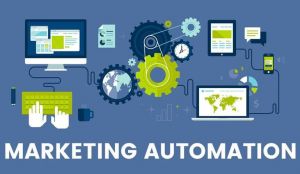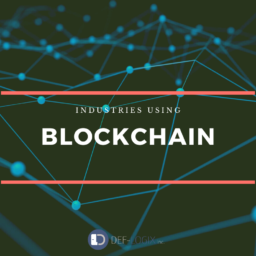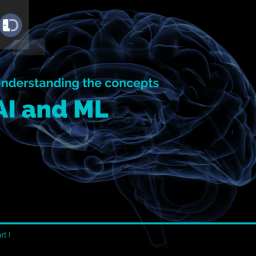In part one of our continuing series on all things Artificial Intelligence we broke down the basic concepts what AI and even Machine Learning are. But did you know that Artificial Intelligence can be applied to almost all concepts and operations of a business, including marketing.
The term AI is tossed around in just about every piece of tech advertising copy and hyped beyond belief by marketing gurus and the media alike.
For many individuals, AI is an enigma surrounded by buzzwords.
But the irony is, as much as the hype has overstated what AI might do in the next years, the reality of how AI is already in play today. Here are some examples maybe without you even knowing AI is being used by a couple of the ‘big guys’.
- Facebook uses facial recognition to recommend who to tag in photos.
- Google uses deep learning to rank search results.
- Netflix uses machine learning to personalize your viewing suggestions.
- Amazon uses natural language processing for Alexa.
- The Washington Post (among other publications) uses natural language generation to write data-driven articles.
See here is the thing, Marketers are not fully leveraging artificial intelligence because of some reason. And I will dispel them as such:
Many marketers feel they lack the technical skills to adopt AI, but, the reality is, you already know everything you need to get started.
There is a difference between machine learning research, which is all about building better algorithms and is what makes data scientists full of glee, and applied machine learning, which is using algorithms to solve business issues, which is what marketers need to learn and do.
You may not understand how a microwave works in theory but that does not stop you from using it to cook.
- Is your company lacking the best data scientist well you can still choose the best data (best ingredients)?
- Put this information into open-sourced algorithms (the appliance).
- To create models (the recipes).
- That produces predictions that can be used for the most intelligent marketing strategies (the dish).
- The quality of which we can determine by testing (tasting).

Hopefully, you didn’t read this during the midst of hunger, but I can sum it up as such. The best way to learn to cook and to use that microwave is to just do it.
There are some teams that are resistant to use AI initiatives as they fear it will cause the next industrial revolution and ultimately they will be out of a job.
The truth of the matter is, unless you plan to retire in the next 5 years, artificial intelligence will significantly impact your career in marketing. That does not mean you have to be replaced by a marketing bot though.
Instead of worrying about bots replacing your job—instead, you will be feeding AI information to do the repetitive tasks you no longer want to do. This will open up time for you to put into creativity and the best strategies for success.
Allowing you to reinvest your time into creativity and strategy. How do you teach AI the things it needs to do for the everyday tasks?
The most common training method for marketing use cases is supervised learning.
Here is a case example.
Let us say your new fancy product is listed on a website and has accumulated 1 million customer reviews. You are probably thinking, there is no way a human being could possibly read all those reviews. So, you want to use machine learning to understand the consensus and get those reviews classified into positive, neutral, or negative.
To achieve this, take a sample of those reviews and label each of them with one of your three classifications. Then, feed this data into your machine learning algorithm. The more data this algorithm has, the better it will be at recognizing patterns and thus, over time will be more reliable at classifying reviews into your 3 categories moving forward.
To test its abilities, rather than feeding it labeled data, input the raw data, and assess the quality of the results.
You can think of launching a new machine learning algorithm like hiring a new marketer, albeit junior level.
The day you onboard the algorithm will more than likely be the worst day it will perform.
It will do the work, but along the way will make mistakes, so again, in these early stages, some supervised learning will be required. Then, the longer amount of time invested is working and working, the better it becomes and the more time you must reinvest into scaling your other marketing channels. As a marketer (if you are one) you got to love this new-found time to be used for other marketing ventures.
Unlike a human, machines are happy to do the same, very narrow job forever – whether that is classifying reviews, adjusting ad bids, posting on social media, or forecasting growth. Along with the task it does, because of the scalability of the marketing AI algorithm, further insight and data can be collected and presented that may have otherwise gone unseen.
Make sure you have the best data sources
The very best AI tools and talent in the world will not deliver results if you are indeed missing the most important piece – high-quality data to inform the learning algorithm.
Data can sometimes be considered old or in silos or we just don’t have enough in the first place to make great use of it.
The problem with all of this is, feeding bad data into a good machine learning algorithm will not give the right answers. The answers will help you make the best decisions to be successfully marketing-wise.
Without this understanding that data is of critical importance, you are likely to blame the poor outcomes on the AI itself. Unfair.
There are things we marketers should be doing to drive for actionable data.
- How recently have you done a Google Analytics audit?
- Have you implemented structured markup and content tagging into your digital marketing pieces?
- Are you using remarketing scripts to collect more user data? Surveys? Questions on social media?
- Are you supporting the collection of data that can be used to identify users across devices and channels, like email addresses? Mobile? Or other media servers?
- Have you got your marketing tools integrated with your Data Management Platform (DMP)?
You should ask yourself these questions and then focus on these areas now, because good AI marketing depends upon having actionable data that is structured, integrated through a common identifier, plentiful, and if you have been reading this far: quality data.
Artificial intelligence is changing consumer behavior. Rather you know it or not, every purchase you make online is recorded and personalized suggestions are made on that purchase or even your viewing history.
Consumers are hit with too much information every day on the internet and social media platforms.
Think about what is already controlled by AI.
- Social algorithms influence what brands we engage with and follow, like, etc,.
- Digital maps determine what routes we take or suggest places nearby to visit like Google Maps.
- Recommendation engines shape awareness and influence purchases. Think the next time you are scrolling down your social media feed if an ad seems a little too ‘well’ placed to match your liking.
- An AI may even determine who you marry. Based on your swiping left and right, the algorithm in your dating app chooses your match.
Algorithms will become the new gatekeepers, through devices like digital personal assistants.
Next time you are at home and you ask Google Home or Alexa to “Order me pizza”. It is the AI who decides on what brand of pizza and the types to order based on your preferences.
But the irony is, as much as the hype has overstated what AI might do in the next years, the reality of how AI is already in play today. Here are some examples maybe without you even knowing AI is being used by a couple of the ‘big guys’.





